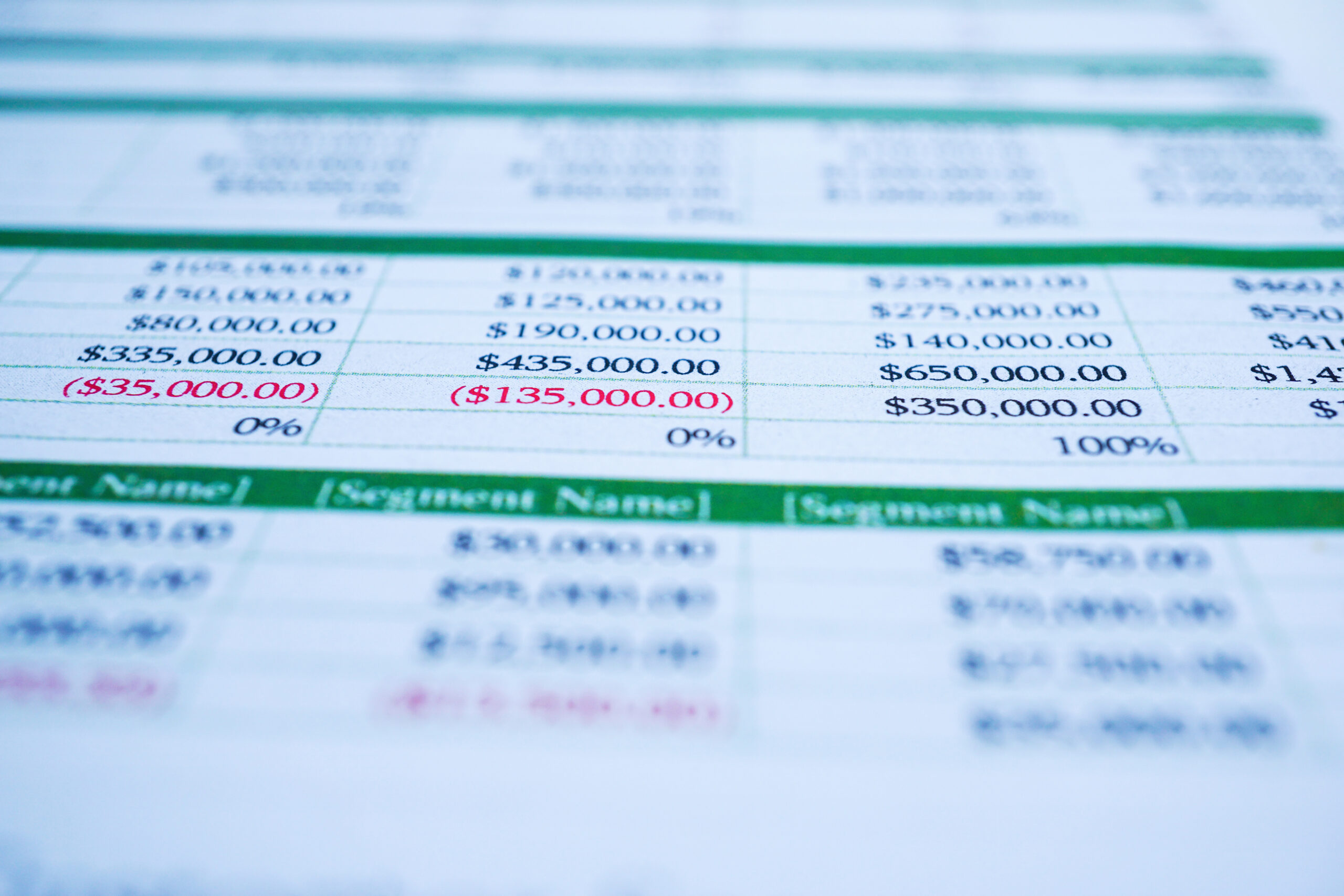If you’ve been wondering how to forecast sales in Microsoft Excel, you’ve come to the right place. Using Excel to forecast sales is a common and effective method many businesses implement to predict future revenue. Excel offers a variety of tools and functions that can be used to analyze historical sales data and make educated predictions about future sales.
With the ability to create charts and graphs, perform calculations, and integrate with other data sources, Microsoft Excel is a powerful tool for forecasting sales. For your convenience, The Brooks Group has put together this comprehensive guide, in which we will explore the various techniques and functions that can be used in Excel to forecast sales and make informed business decisions.
Why Use Excel For Forecasting Your Sales?

It’s straightforward to learn how to use Microsoft Excel, which is part of what makes it so appealing as a sales forecast tool. Let’s go over the various benefits of forecasting sales using Excel below:
Easy Data Analysis
One of the primary reasons to use Microsoft Excel for forecasting sales is that it makes data analysis easy. Excel provides tools and functions that allow users to quickly and efficiently analyze historical sales data. With Excel, you can quickly sort and filter data, create charts and graphs, and perform calculations to identify specific trends and patterns in sales.
Additionally, Excel allows its users to import data from other sources, such as a CRM or an e-commerce platform, which makes it easy to combine data from multiple sources and gain a more comprehensive view of your sales.
Variety of Forecast Functions
Excel also offers a variety of forecast functions that can be used to predict future sales. These functions are designed to analyze historical sales data and make educated predictions about future revenue for your company.
Some of the most commonly used forecast functions in Excel include the trend function — which can be used to create a linear or logarithmic trend line for a specific set of data; exponential smoothing, which implements a weighted average of past data to smooth out fluctuations and make predictions about future sales; and regression analysis, which uses past data to identify relationships between two or more variables and make predictions about future sales based on those relationships.
These are just a few examples of the many forecast functions Excel offers. With a plethora of options available, Excel provides flexibility for its users to choose the best method possible for forecasting sales based on the nature of the data being analyzed.
Easy Collaboration
Excel allows multiple users to work on the same spreadsheet simultaneously, which means different team members can contribute their data, insights, and predictions regarding a specific sales forecast. This makes it easy to share the forecast information with other departments or stakeholders, such as the CEO, CFO, or sales team.
Additionally, Excel allows for version control, so users can keep track of any changes made to the forecast over time and revert to previous versions if necessary. This function helps ensure that the forecast remains accurate and up-to-date, even as new information becomes available.
Flexibility
Flexibility is another crucial advantage of using Microsoft Excel for forecasting sales. Excel allows its users to choose the best methods for their particular needs. This means businesses of all sizes and industries can use it to forecast sales, regardless of the nature of their data or business needs.
Excel’s flexibility also allows for integration with other software tools. For example, Excel can be integrated with data visualization tools like PowerBI and databases like the SQL server. This enables users to create more advanced and interactive forecasts and combine data from multiple sources.
Cost Effective
One of the main reasons Microsoft Excel is such a popular tool for sales forecasting is that it is incredibly cost-effective. Excel is a widely available software, and many people already have it installed on their computers. This makes it relatively easy for businesses of all sizes to utilize it for forecasting sales.
What Are the Different Sales Forecasting Methods Available in Excel?
There are many sales forecasting methods available in Excel. Knowing and understanding these different methods will enable you to make more informed decisions regarding your future actions. Let’s go over these sales forecasting methods below:
Moving Average Method
The moving average method is commonly used for forecasting sales in Microsoft Excel. This simple method can be used to analyze historical sales data and make predictions about future sales.
To use the moving average method in Excel, you must input your historical sales data into a spreadsheet. Once this is done, you can use the AVERAGE function to calculate the average of a set of values over a given time.
Seasonal Decomposition
The seasonal decomposition method separates data by its trend, seasonal, and residual components. This method can be beneficial when the sales data shows a clear seasonal pattern, such as higher sales in certain months or during certain year seasons.
To use the seasonal decomposition method in Microsoft Excel, you’ll need to input your historical sales data into a spreadsheet and then use the SEASONALITY function. This function will analyze the data and decompose it into its trend, seasonal, and residual components.
Regression Analysis
Regression analysis is a statistical method used for forecasting sales in Excel by identifying the relationship between a dependent variable (sales) and one or more independent variables (predictors). This method works well for identifying factors that may influence your sales.
To use regression analysis in Excel, you must input your historical sales data and the relevant independent variables into a spreadsheet. From there, you can use the LINEST function to perform a linear regression analysis, which will calculate the slope and y-intercept of the best-fit line for your data.
Exponential Smoothing
Exponential smoothing (which we will go over in more detail later) is a time series forecasting method that can forecast sales in Excel by giving more weight to recent observations and less weight to older comments. This method helps analyze historical predictions about future sales when there is a particular trend or pattern in the data.
To properly utilize the exponential smoothing method, you must use the FORECAST.ETS function. It uses the Exponential Smoothing State Space (ETS) model to forecast the future values of a time series based on historical data. Once applied, it returns a forecasted value for each period.
Time Series Analysis
Time series analysis is a method that can be used to forecast sales in Excel by analyzing historical sales data over time. This method can help identify patterns, trends, and seasonality in data. It can then be used to predict future sales based on those patterns.
To use time series analysis in Excel, input your historical sales data into a spreadsheet. After that, you can use Excel’s various tools and techniques to analyze the data. For example, you could use the TREND function to plot a trend line for the data and make predictions about future sales based on the slope of the line.
How to Forecast Sales in Excel Through the Exponential Smoothing Method

This method eliminates data irregularities by assigning exponentially decreasing weights to older observations. Given the quality and quantity of your historical data, exponential smoothing allows you to make sales forecasts well into the following year. Let’s go over how to use the exponential smoothing method in Excel below:
Input Your Data
The first thing you’ll need to do is input your historical sales data into an Excel spreadsheet. This should include the date and the sales figures for each period.
Select Data
Go to the “Data” tab and click on the “Forecast Sheet” button in the “Forecast” section of the spreadsheet.
Select Exponential Smoothing
In the “Forecast Sheet” dialog box, select “Exponential Smoothing” as the method and set the forecast horizon (the number of periods you want to forecast into the future).
Select Your Smoothing Constant
You can do this using the “FORECAST.ETS” function. This function allows you to set the smoothing factor (alpha), which ranges from 0 to 1.
Fill Output Range Blank
In the Output Range blank, select the cell number where you’d like the results to be displayed.
Chart View (Optional)
You can use the charting tools in Excel to visualize the forecasted values and compare them with the historical data.
How to Forecast Sales in Excel Through the Moving Averages Method
The moving averages method is popular because it’s so easy to use. Let’s go over how to use the moving averages method in Excel below:
Click on the Data Tab Menu
First, click on Excel’s “Data” tab. A range of different options will appear on your screen.
Select Data Analysis
In the Analysis section, select “Data Analysis.” This action will open a window with a list of analysis functions you can perform.
Select Moving Average
Select “Moving Average” from this list and click “OK.” A new window labeled “Moving Average” will pop up.
Enter the Data Range
In the Input Range box, enter the data range you want to analyze.
Input Your Preferred Interval
Input your preferred interval into the Interval box.
Fill Output Range Blank
In the Output Range box, enter where you would like the moving averages to be listed.
Chart View (Optional)
For a visual display of the results, tick the “Chart Output” option and click “OK.”
Frequently Asked Questions
How do I add formulas to a chart?
Once you’ve created a chart from your data, right-click on the chart and select “Select Data” from the context menu. In the “Select Data” dialog box, click the “Add” button to add a new series to your chart.
Where can I find advanced options?
If you want more options, click on the “Options” tab under the “Create Forecast Sheet” dialog box.
What are smoothing coefficients?
Smoothing coefficients in Excel are used in time series forecasting methods, such as exponential smoothing, to give more weight to recent observations and less weight to older comments.
Explore More With The Brooks Group
As we’ve learned, Microsoft Excel offers many features and functions that can be used to create detailed sales forecasting models. It’s important to note that each of the methods discussed in this guide has its assumptions and limitations and should therefore be used based on the nature of the data and the pattern of the time series and interested in learning more? Check out more related content here.




